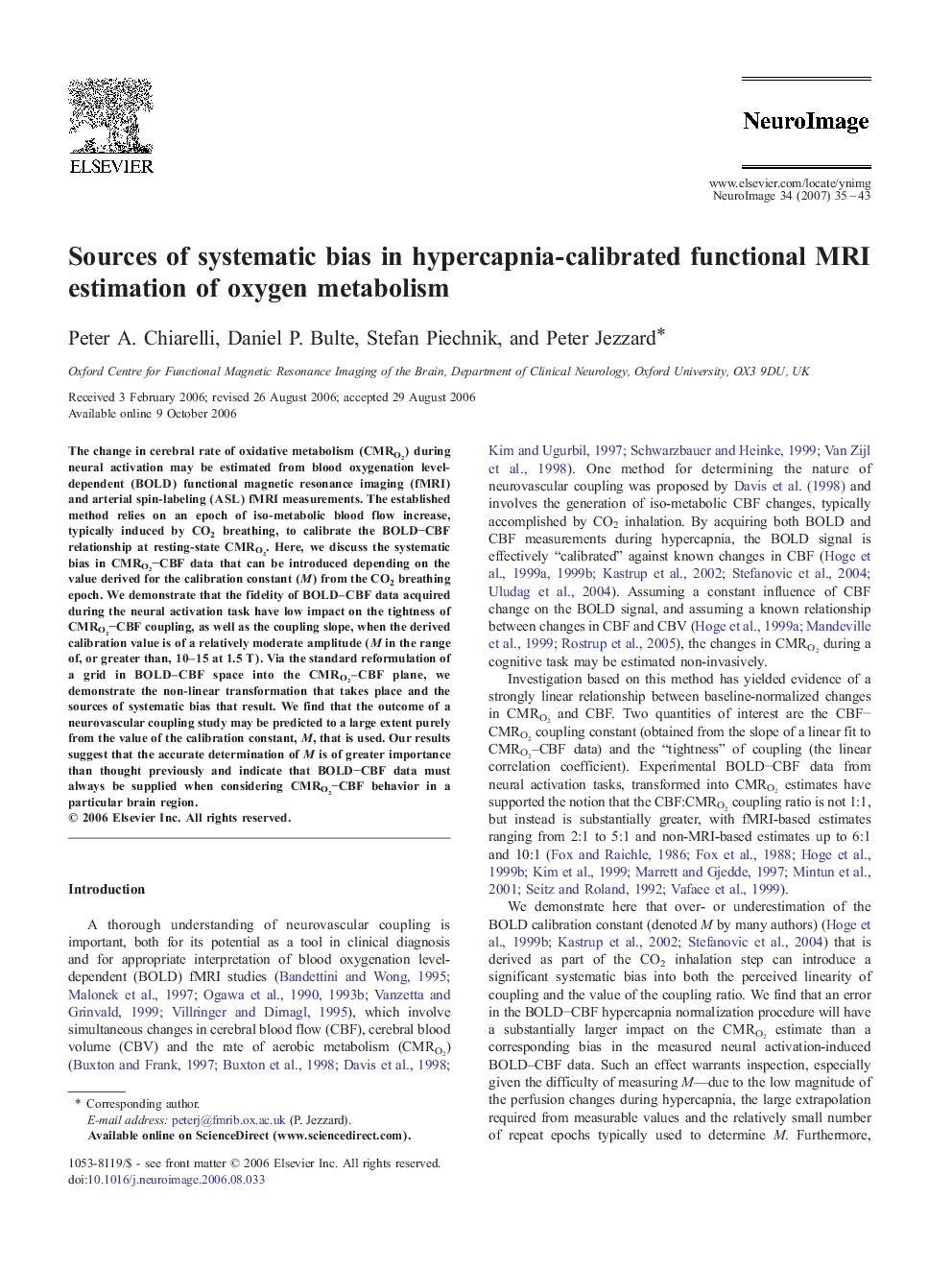| Article ID | Journal | Published Year | Pages | File Type |
|---|---|---|---|---|
| 3074299 | NeuroImage | 2007 | 9 Pages |
Abstract
The change in cerebral rate of oxidative metabolism (CMRO2) during neural activation may be estimated from blood oxygenation level-dependent (BOLD) functional magnetic resonance imaging (fMRI) and arterial spin-labeling (ASL) fMRI measurements. The established method relies on an epoch of iso-metabolic blood flow increase, typically induced by CO2 breathing, to calibrate the BOLDâCBF relationship at resting-state CMRO2. Here, we discuss the systematic bias in CMRO2âCBF data that can be introduced depending on the value derived for the calibration constant (M) from the CO2 breathing epoch. We demonstrate that the fidelity of BOLD-CBF data acquired during the neural activation task have low impact on the tightness of CMRO2âCBF coupling, as well as the coupling slope, when the derived calibration value is of a relatively moderate amplitude (M in the range of, or greater than, 10-15 at 1.5Â T). Via the standard reformulation of a grid in BOLD-CBF space into the CMRO2-CBF plane, we demonstrate the non-linear transformation that takes place and the sources of systematic bias that result. We find that the outcome of a neurovascular coupling study may be predicted to a large extent purely from the value of the calibration constant, M, that is used. Our results suggest that the accurate determination of M is of greater importance than thought previously and indicate that BOLDâCBF data must always be supplied when considering CMRO2âCBF behavior in a particular brain region.
Related Topics
Life Sciences
Neuroscience
Cognitive Neuroscience
Authors
Peter A. Chiarelli, Daniel P. Bulte, Stefan Piechnik, Peter Jezzard,
